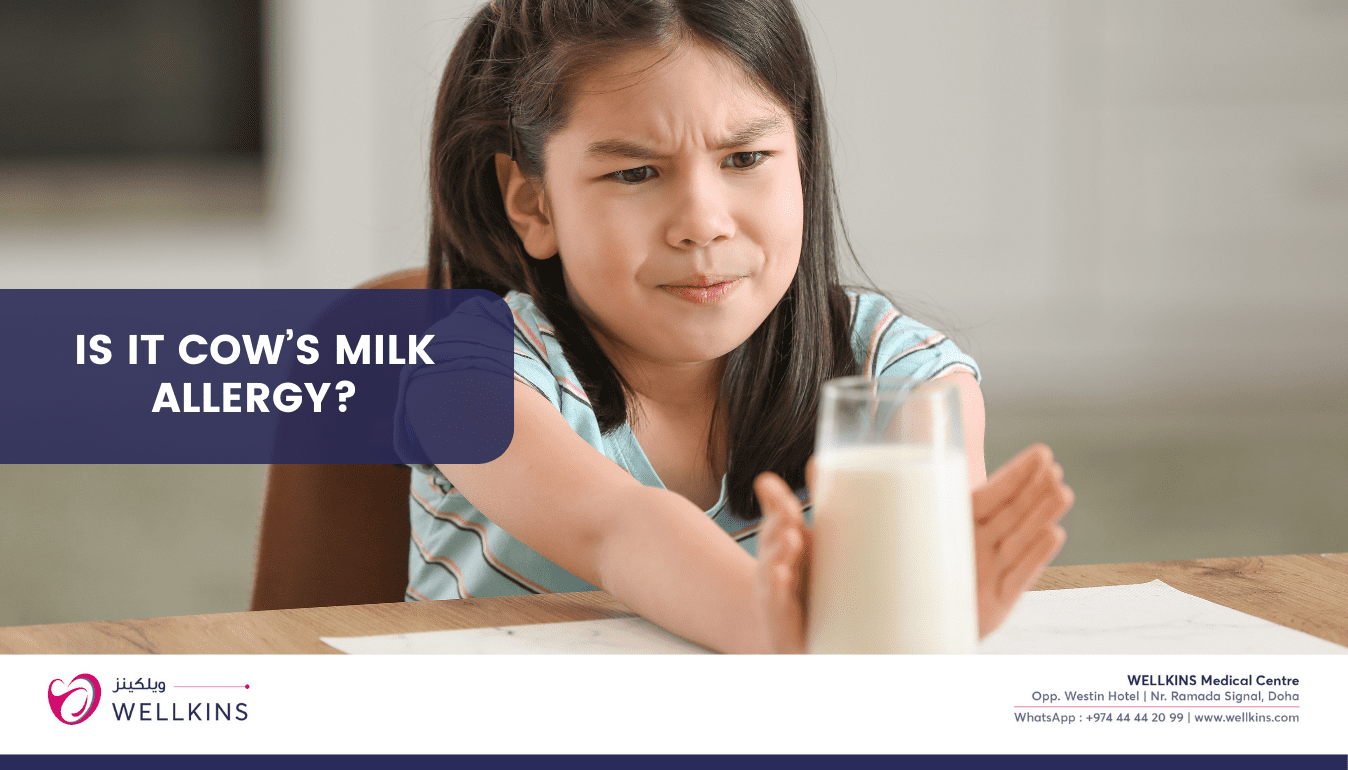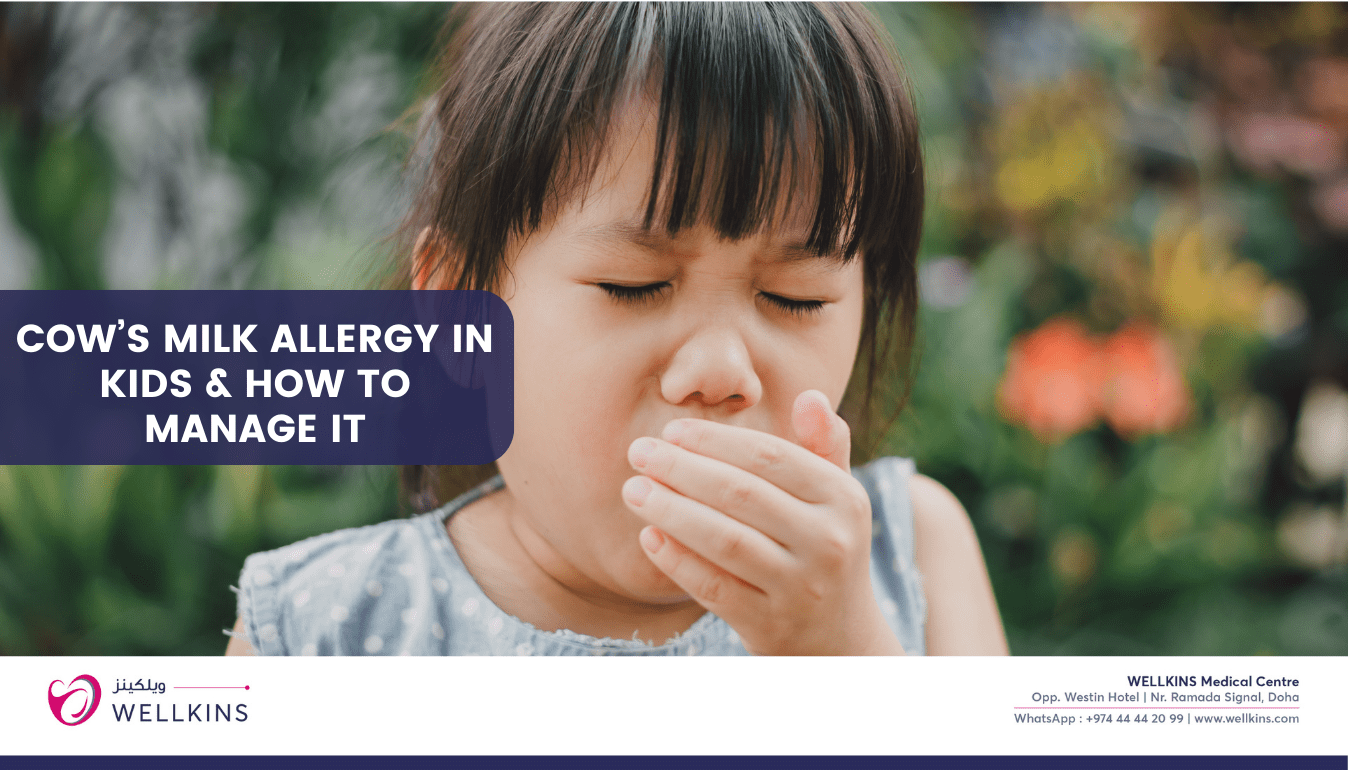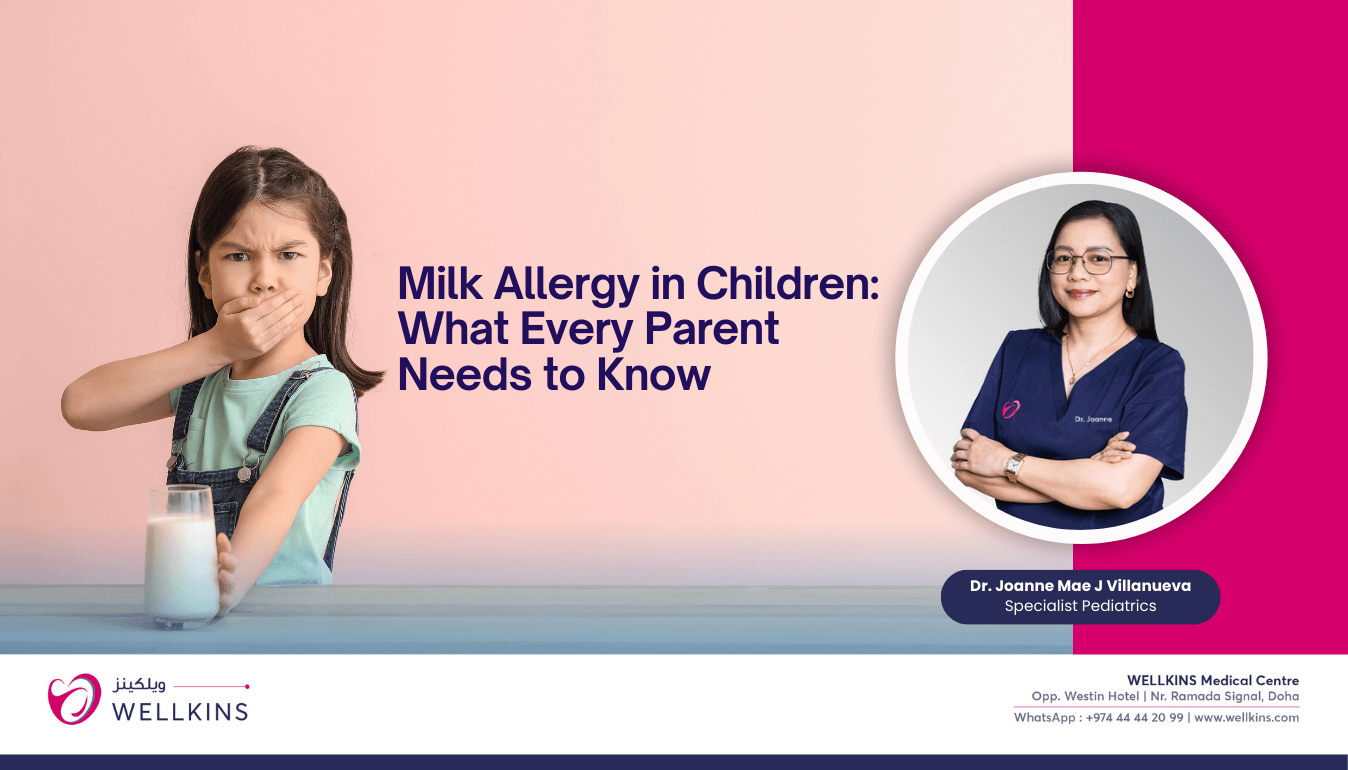Author: Dr. Joanne Mae J Villanueva (Specialist Pediatrician – WELLKINS Medical Centre)
As a parent, noticing your child reacting to milk can be worrying. Cow’s milk allergy (CMA) is one of the most common food allergies in infants and young children, affecting about 2-3% of kids under 3 years old. At Wellkins Medical Centre, we frequently help families navigate CMA with proper diagnosis, management, and reassurance—because most children outgrow it!
Cows’ milk allergy, is one of the most common childhood food allergies. There are two types of cow’s milk allergy depending on how the immune system reacts. The IgE-mediated food allergy is caused by the immunoglobulin E antibody which the symptoms are immediate and can occur within minutes or hours after consuming cow’s milk, while the Non- IgE mediated food allergy, the symptoms may occur after few hours or days after exposure.
CMA happens when a child’s immune system mistakenly attacks proteins in cow’s milk, triggering an allergic reaction. This is different from lactose intolerance (which involves difficulty digesting milk sugar, not an immune response).
Dr. Joanne Mae J Villanueva (Specialist Pediatrician – WELLKINS Medical Centre)
Symptoms of cow’s milk allergy
Symptoms of CMA can vary from mild to a life threatening conditions which includes:
- Skin reactions such as hives, angioedema, eczema, redness, or itchiness
- Gastrointestinal issues include vomiting, diarrhoea, abdominal pain, or blood in the stool
- Respiratory symptoms include sneezing, runny nose, coughing, wheezing, shortness of breath even anaphylaxis, which requires immediate medical attention.
How do I know if my child has CMA?
Watch for these signs after consuming milk or dairy:
✔ Skin: Rash, eczema, facial swelling
✔ Gut: Vomiting, diarrhea, constipation, colic
✔ Breathing: Coughing, wheezing, nasal congestion
✔ Severe (Anaphylaxis): Trouble breathing, dizziness—seek emergency care immediately!

Diagnosing a Cow’s Milk Allergy
There is no specific test to detect cow’s milk allergy. A thorough history and physical examination is important to document the onset of the signs and symptoms. Diagnostic test such as skin prick test and serum-specific IgE may be done to help rule out the disease. Both tests show high sensitivity but low specificity and can be positive in non-allergic subjects.
Diet elimination can be done. An infant should receive a diet free of cow’s milk protein for a month, if symptoms improve following elimination of the suspected food, then an oral food challenge should be done next. If the symptoms recur then cow’s milk allergy is confirmed. If symptoms do not improve after the elimination diet, this rules out the diagnosis of cow’s milk allergy, and further reevaluation should be done.
Treatment or management of cow’s milk allergy at Wellkins medical centre Doha
Exclusive breastfeeding is still highly recommended for babies babies with high risk of developing cow’s milk allergy. However, cow’s milk protein passed through breastmilk to the infant and may cause an allergic reaction, thus breastfeeding mothers with cow’s milk allergy babies, dairy products should be avoided.
If breastfeeding is not possible, hypoallergenic formula is recommended. These hypoallergenic formulas are classified as either partially or extensively hydrolyzed or amino acid formulas.
Early diagnosis is essential to early management of cows milk allergy in infants. This helps prevent certain complications such as nutritional deficiencies due to dietary restrictions and feeding difficulties and lessens the stress or anxiety to parents when it comes to making food choices.
Need help managing milk allergy?
Every child’s needs are different. If you’re struggling with:
- Meal planning
- Severe reactions
- Nutritional concerns
Book a consultation with our pediatric team for personalized guidance.

(Disclaimer: This blog is for informational purposes only. Consult your doctor for medical advice.)






